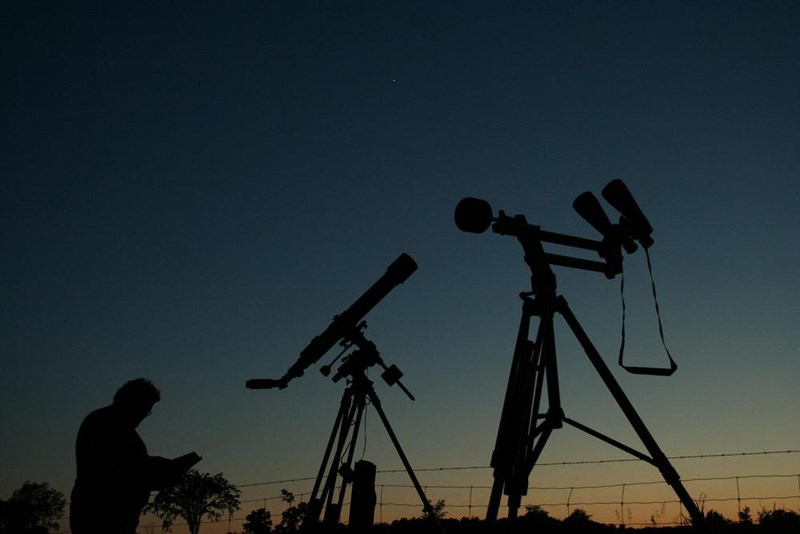Anyone camping out this weekend won’t need to do anything more to entertain themselves than lean back in their lawn chairs and look up in the sky.
The nights of Aug. 11 and Aug. 12 will be the peaks of the annual Perseid meteor shower with as many as 100 or more meteors per hour visible to those in areas away from light pollution, says Ottawa-area astronomer Gary Boyle, a former instructor at Algonquin College.
The meteoroids are bits of debris from Comet 109P/Swift-Tuttle, which orbits the sun once every 133 years and last rounded the sun in 1992, Boyle says. Comets are mainly made up of rocks along with ice, gases and chemicals and the bits that create the meteor shower are about the size of grains of sand.
“Once the comet comes close to the sun the solar winds blow this stuff off just like putting a fan to paper confetti,” Boyle says. “Every year as we orbit the sun, just like a car goes past the finish line on a race track, we encounter this debris field around Aug. 11 or Aug. 12 every year and there are other meteor showers like that. The Perseids are one of the best ones.”
Because there is a new moon on Aug. 11 there is zero chance of interference and Boyle says the best way to view the meteor shower is to gather a group of friends in a wide open space away from the city and look in all directions for shooting stars. If there are any pea-sized bits of debris entering the atmosphere at a speed of about 60 kilometre per second, an even bigger spectacle may appear.
“Some of these might even be fireballs and fireballs in the country can light up the ground and it’s quite impressive,” says Boyle.
In addition to the meteor shower, Boyle says this weekend is also a great time to check out planets.
“As it gets dark look in the southeast, you’ll see Mars a bright orange colour. You also have Jupiter that’s way up in the west and Venus in the lower western sky. The Milky Way is riding high. In fact a lot of the Perseids travel through the actual Milky Way itself. It’s just a great weekend if it’s clear to really look up and soak in Mother Nature’s greatest show."
Boyle, who has an asteroid named after him, says he has been interested in the sky since he was eight years old in 1965 and can remember going to the drive-in on the border between Quebec and New York and being more interested in the stars than whatever movie was playing.
“People like to stay at a five star hotel. I like a five billion star hotel,” he says.
Find out more about astronomy at Boyle’s website www.wondersofastronomy.com or follow his @astroeducator Twitter account.




